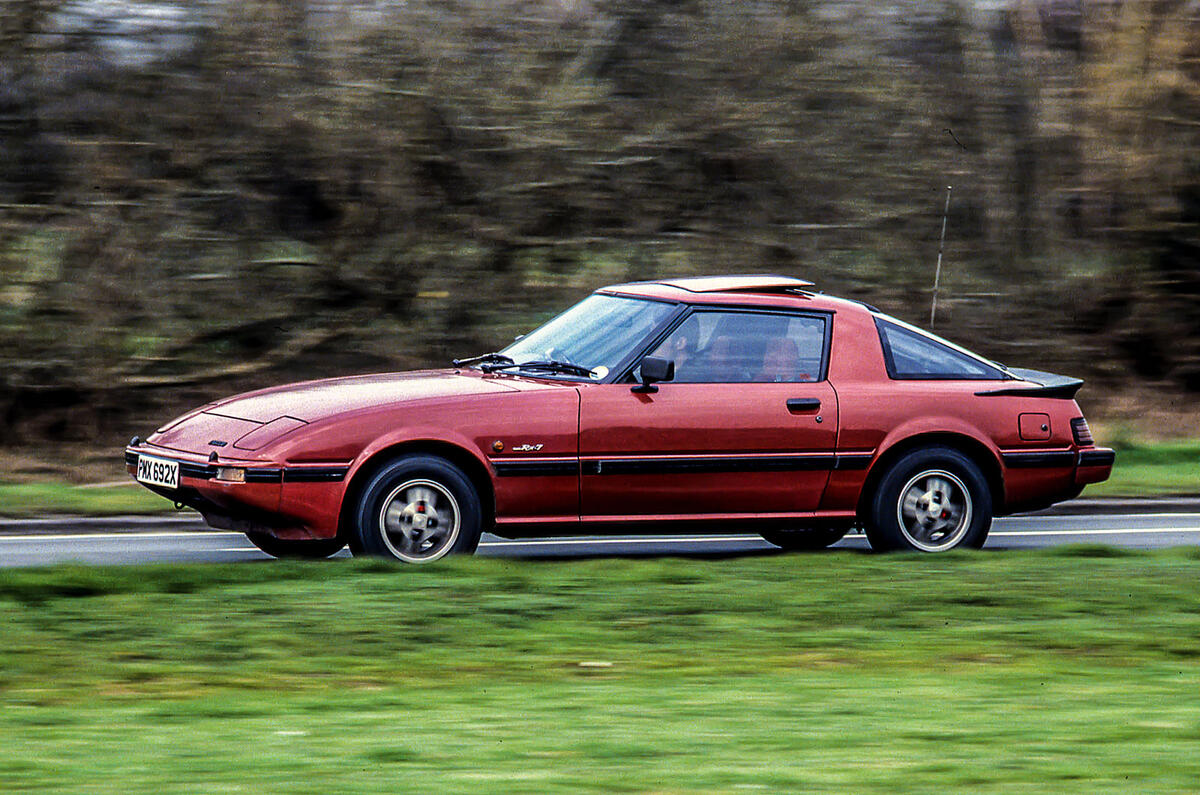Autocar kicked off its road test of the Mazda RX-7 by proclaiming the model “the Wankel’s lonely champion”, with the manufacturer remaining the standard-bearer for rotary engines in road cars.
The front-engined, rear-wheel-drive sports coupé was first seen in March 1978, and this magazine got its hands on one near the end of the following year, in line with its UK launch.
Mazda wasn’t having too many difficulties in selling the car in left-hand-drive form. In the 17 months up to the British launch, more than 90,000 cars had been sold, and production was running at around 7000 cars per week
Produced by Toyo Kogyo, as Mazda’s parent company was then called, the RX-7 was imported to the UK by Mazda Car Imports (GB) Ltd in Tunbridge Wells and sold for £8549 in the UK – a comparatively steep price compared with its US tag of $7195, which worked out at £3564.
Company chairman Kenichi Yamamoto was a passionate believer in the Wankel engine and the benefits it could bring to Mazda by differentiating it from its rivals. However, such dedication had been tempered with a more pragmatic approach, borne out of near-bankruptcy in the early 1970s, and Mazda had bolstered its range with cars using more conventional engines.
As Autocar put it: “The company has apparently persevered and flourished because of a blend of piston-engined caution and Wankel-engined enterprise.
“The enterprise has been sensibly aimed. The Wankel is not noted for good low-speed power, so they put their new-generation rotary in a sports car, where bottom-end power, though still very desirable, is not essential.”
Power for the RX-7 came from a twin-rotor engine that offered four times its single-rotor displacement (573cc) to give an effective 2292cc capacity. It produced a claimed 105bhp at 6000rpm and 106lb ft torque at 4000rpm.
Autocar reckoned the RX-7 was aimed squarely at the Porsche 924, with other rivals including the BMW 323i, Lotus Eclat 523, Ford Capri 3000S and Triumph TR7.
“Mazda claims to have improved on the Wankel’s other great failing, poor fuel consumption – but to what extent remains arguable. Our tests show that in both steady-speed and general respects the car is thirstier than its rivals, but again, economy is less important in the sporting market,” our testers wrote
The RX-7 won favour for its attractive shape. “The body, greatly admired by most onlookers for its apparently good aerodynamics (Mazda claims a 0.36 drag coefficient) and – unusual for a Japanese car – exemplary lack of unnecessary ornamentation, sits on an independent front end – MacPherson strut – and a live-axle rear,” said Autocar.





Join the debate
Add your comment
In other words...
One of the worst cars ever made?